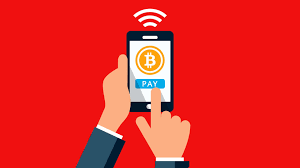15 year term payment (Principal and interest) = $3,817.99
30 year term payment (Principal and interest) = $2,929.48
Interest-only payment (Usually available first 10 years) = $2,660.00
Minimum monthly payment (Neg-am payment) = $1,286.56
Minimum monthly payment Year 1 = $1,286.56
Minimum monthly payment Year 2 = $1,383.05
Minimum monthly payment Year 3 = $1,486.78
Minimum monthly payment Year 4 = $1,598.29
Minimum monthly payment Year 5 = $1,718.16
Typical five-year interest-only adjustable rate mortgage at 6.75% is $2,250.00.
Monthly savings making the minimum payment = $963.44
As you can see, the minimum payment is dramatically lower than the interest-only payment, but it won’t be around forever. And the minimum payment increases each year, as well as the accrued interest.
I’ve seen a lot of lender commercials lately offering option ARM programs under the guise of names such as “Super-Saver program” and “Smart Option”. They tend to highlight the benefits, mainly the cost savings without mentioning the negative implications.
The newest option ARM program now is the so-called “assured option arm”, also known as a five-year fixed option ARM mortgage. It combines the safety of a five-year fixed product with the flexibility of an option arm. It can be useful for the same reasons I mentioned above, with the security of a fixed interest rate for a small time period. But it’s still a risky loan product, and one that should be approached cautiously as well.
All that said, the option ARM program definitely has the potential to save homeowners money, and keep money in their pocket during hard times, but it should be approached cautiously.
A loan officer or mortgage broker may recommend the option ARM program as a way to keep your payments down, but if you don’t feel you can make the interest-only payments in the future, and eventually the much higher fully amortized payment, it’s probably best that you look for something more conventional.
If you can’t make the fully amortized payment, you don’t really qualify for the home loan. Bottomline.
Option ARMs Banned Post-Crisis
- The option ARM will go in history
- As the most infamous home loan of all time
- For single-handedly taking down storied financial institutions
- And leading to the largest financial crisis in American history
In early 2014, the Consumer Financial Protection Bureau (CFPB) enacted the Qualified Mortgage (QM) rule, which required lenders to stop making mortgages with what they referred to as “harmful loan features.”
One of these features turned out to be negative amortization, meaning the option ARM as we knew it was a thing of the past. Lenders get certain legal protections if they make loans that abide by the QM rule, and as such most loans are now QM loans.
However, it’s still possible for a lender to offer a similar product in the future, but it’s doubtful because they’ll be assuming more risk. And we all know these are risky loans.
In summary, the option ARM will go down in history as one of the most infamous loan programs of all time. One could easily argue that they did a lot more harm than good, and were probably one of the main reasons everything fell apart.




